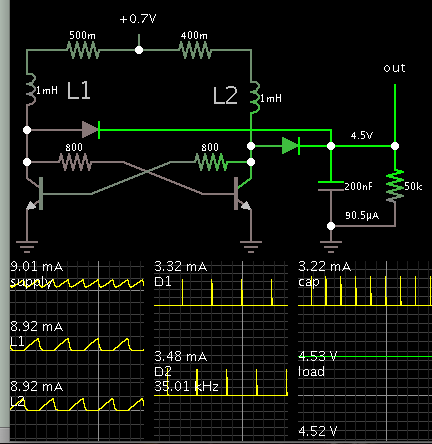bio_man
Full Member level 2
Hello All,
I have a circuit that I want it to startup from a very Low voltage source ( 0.25v). I was able to boost this voltage to a 1v using cross-couples-charge-pump but the problem is that my the nMOS switches I am using needs at least 3V to work efficiently.
I came across a concept of zero-threshold voltage MOSFETs. I want to see if any of you have used these mosfets and how can I layout them ? because the usual MOSFETs will definitely has a Vth of few tens of millivolts.
Also, any tips how can I get the 3V out of my 0.25v source?
Thanks
I have a circuit that I want it to startup from a very Low voltage source ( 0.25v). I was able to boost this voltage to a 1v using cross-couples-charge-pump but the problem is that my the nMOS switches I am using needs at least 3V to work efficiently.
I came across a concept of zero-threshold voltage MOSFETs. I want to see if any of you have used these mosfets and how can I layout them ? because the usual MOSFETs will definitely has a Vth of few tens of millivolts.
Also, any tips how can I get the 3V out of my 0.25v source?
Thanks
